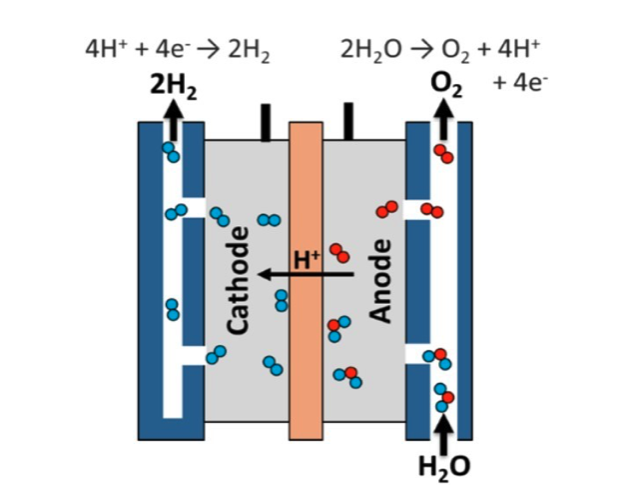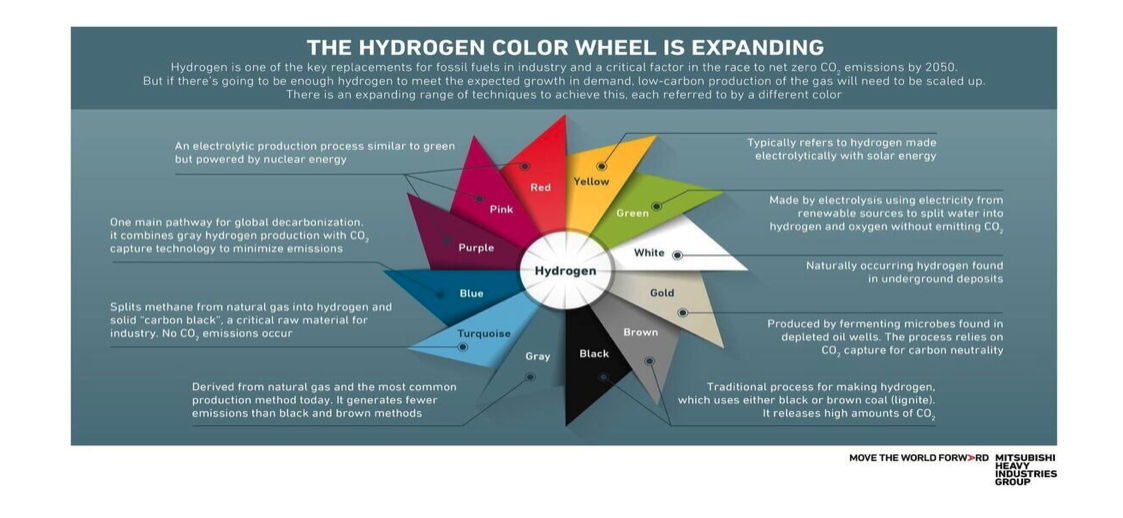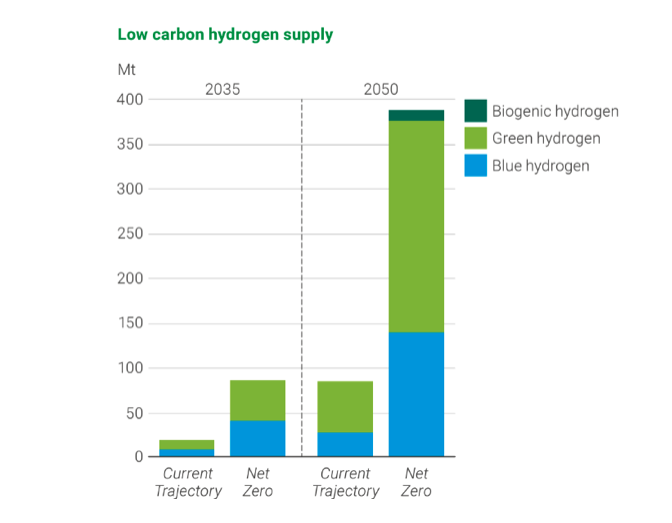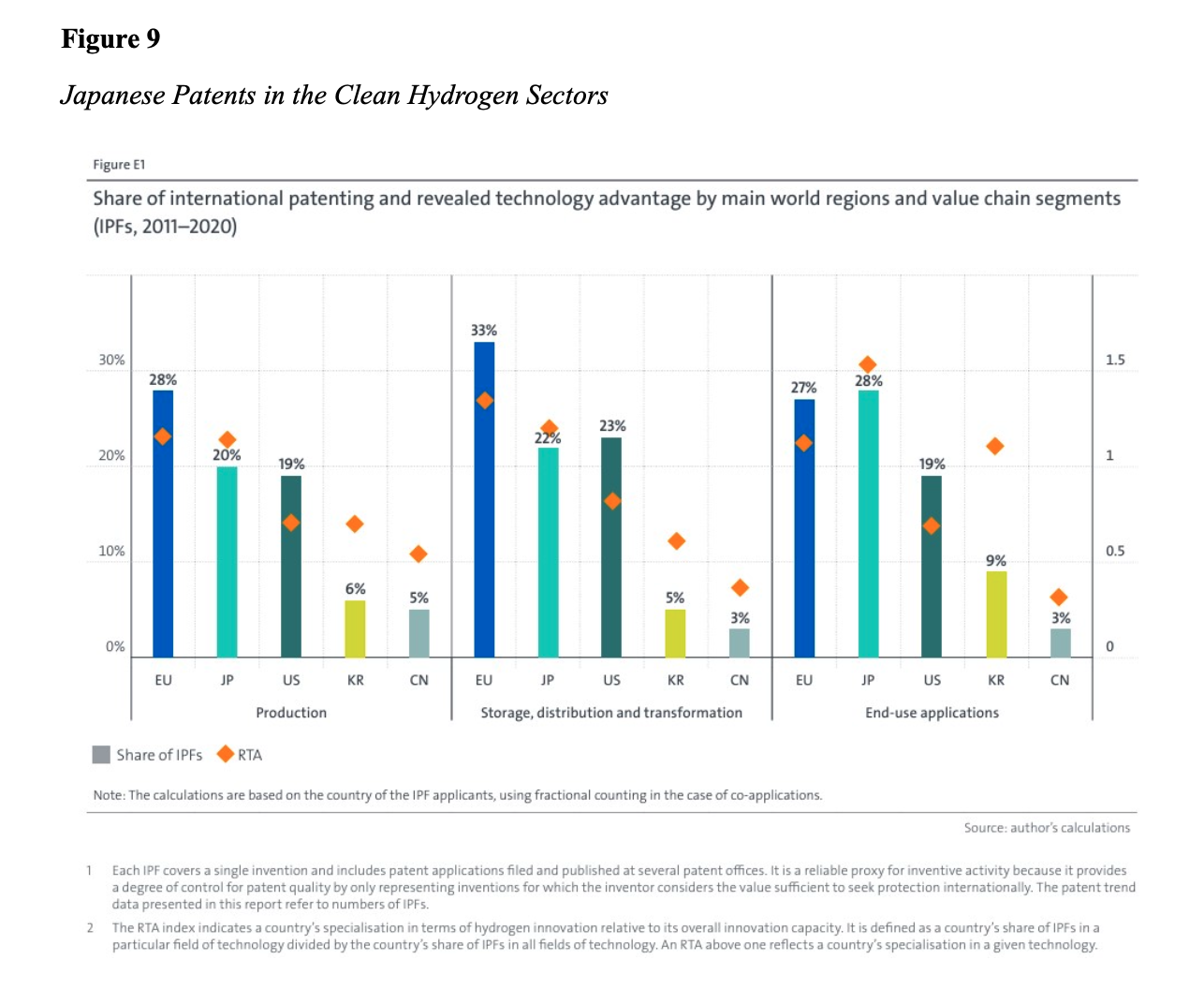Green vs pink hydrogen production in Japan: a partial circular economy approach (Part 2/6)


· 10 min read
This article is the second in a series of six, based on a research paper by Dr. Venera N. Anderson, “Comparative Analysis of Green and Pink Hydrogen Production in Japan Based on a Partial Circular Economy Approach”. You can read part one here.
Japan is currently facing urgent energy and environmental challenges, demanding bold and sustainable solutions. As the world’s fifth-largest carbon emitter, the country must rapidly transition to cleaner energy sources to meet its 2050 carbon neutrality goal. Recognizing hydrogen’s potential, Japan has committed to major investments, including the $400 million Japan Hydrogen Fund and extensive government-backed incentives. However, while hydrogen is often seen as a “clean” energy source, its production and supply chains still carry emissions and environmental trade-offs. Identifying the most reasonable, practical, and economic source of clean hydrogen (green or pink) beyond 2040 is therefore critical. This research examines Japan’s energy and environmental situation, exploring how hydrogen, produced using a partial circular economy approach, could become the future cornerstone of Japan’s energy strategy.
Hydrogen (H2) can be produced from different feedstocks using various process technologies (DOE, 2024a). Although H2 is abundant in the universe, it is not an “easy-to-tap source of pure H2 available on Earth” (Gencer, 2024, p. 1). This lightest element exists in the gaseous form at normal temperature and pressure (H2 Tools, 2024). High pressure tanks (350–700 bar [5,000–10,000 psi] tank pressure) are usually required to store H2 (DOE, 2024f). H2 turns into liquid at minus 423°F (or minus 253°C). Recently, some natural H2 resources around the world in the Earth’s mantle have been discovered (Ozin, 2023). These resources are yet to be exploited since significant tons of methane could be released alongside H2 as greenhouse gases throughout the extraction via the fracking process (Chew et al., 2023). Due to its high chemical reactivity, H2 exists mainly in the compound form with other elements on Earth, such as solids, liquids, and gases (EIA, 2023). Thus, it must be separated from the H2-containing feedstock through thermochemical processes for fossil fuels (coal and gas) or renewable sources (biomass). Electricity generated from wind, sunlight, and nuclear sources can produce H2 from water through electrolysis. Electrolysis is a chemical process of using electricity to split water into oxygen (O2) and H2, which occurs in an electrolyzer unit. Electrolyzers consist of a cathode and anode separated by an electrolyte (Figure 6). Various electrolyzers function differently due to the specific type of the involved electrolyte material and the ionic species the material conducts (DOE, 2024b).
Advanced thermochemical, photoelectrochemical, and photobiological processes can also generate H2 from water directly using sunlight (DOE, 2024a; 2024b). Based on the laws of thermodynamics, it takes more energy to obtain H2 than H2 provides when it is converted into usable energy. Therefore, the current H2 production is energy-intensive, costly, and does not have good energy accounting (WEF, Economist, 2021). H2 can also be classified by colors (which seem to be defined ad hoc in many ways) depending on various technological resources and production methods (Willige, 2022a) (Figure 6).
Figure 6

Gray H2 is the dominant form of H2 production, using the natural gas steam methane reforming (SMR) process (National Grid, 2024). During the SMR, a high-temperature steam (700°C-1000°C) separates H2 from the methane source, such as natural gas (DOE, 2024c). Blue H2 is produced through an SMR process with added carbon capture and sequestration (CCS). Green H2 is made through electrolysis using renewable sources, whereas pink H2 is derived through electrolysis with nuclear energy (Willige, 2022). Hydrogen Insights (2024) defines “clean H2” as the combination of renewable H2 and low-carbon H2 (p. 3). Renewable H2 refers to H2 produced through renewable energy sources via water electrolysis. Low-carbon H2 classifies H2 developed using low-emissions technologies with significantly lower GHG emissions than conventional production pathways. Nonetheless, as it was mentioned in the “Introduction,” the so-called clean H2 is not entirely a clean energy source since all energy systems have pollutants, emissions, and other externalities in their lifecycles and along their supply chains (Sullivan, 2022c; Gencer, 2024).
Figure 7

Since Japan is one of the world’s largest economies, its decarbonization is essential for attaining global GHG emissions reduction of the magnitude necessary to fight climate change. H2 global production reached 97 million tons (MMT) in 2023, less than 1% of which was clean H2. Japan’s H2 gray H2 production was approximately 2 million tons of (MMT)/year, with 1 MMT/year in imports, with a marginal amount of green H2. The current color-agnostic targets for clean H2 and ammonia are 3MMT/year by 2030, 12 MMT/year by 2040, and approximately 20 MMT/year by 2050 (Baker McKenzie; Japan NRG; IEA, 2024; METI, 2023). BP Outlook (2024) warned that while blue H2 starts with a favorable cost advantage relative to green H2, by 2050, nearly 60% of clean H2 in its Net Zero scenario will be represented by green H2 (Figure 8). Global Hydrogen Insights 2024 demonstrated this current trend through the composition of clean H2 supply that changed from 60% renewable H2 (green H2) in 2020 to nearly 75% in 2024 (Hydrogen Council, 2024).
Figure 8

The current disruptive and exponential clean tech revolution can reduce the clean H2’s costs even more (Bond et al., 2024). Thus, this research study specifically focuses on the potential future (2040-beyond) clean H2 sources, such as green and pink H2. The following subsection briefly describes the Japanese clean H2 landscape.
Japan has been a global pioneer in developing clean H2-related technologies and policies. From 2011 to 2020, the country emerged as a top innovator, accounting for 24% of clean H2-related international patent families (IPFs) published (Figure 9).
Figure 9

Japanese clean H2 patenting grew faster than in the European Union, with a compound average growth rate of 6.2% versus 4.5%, respectively, during the last decade (IEA, 2023a). Japan also led global clean H2 policy development. In 2014, Prime Minister Abe announced Japan’s commitment to become a “H2 society,” focusing on clean H2 supply creation, demand stimulation, and international supply chain development (Delatte, 2023, p. 1). Furthermore, Japan spearheaded the global clean H2 development by releasing the first-ever H2 strategy. The Basic Hydrogen Strategy (2017), which sought to 1) expand its clean H2 market to 3 MMT/year by 2030 and 20 MM/tons/year by 2050 and 2) decrease the clean H2 cost to nearly one-third of the present level by 2030 (METI, 2017). In 2023, Japan revised its H2 strategy, adding 1) the mid-term volume target of 12 MMT/year by 2040, 2) an emission intensity standard to define clean H2 (3.4 kg – CO2/kg-H2), and 3) a 15 GW new electrolyzer capacity target by 2030 for Japanese-related companies (METI, 2023a). Among many, some significant policies have been immensely supportive of clean H2 development, such as the Strategic Roadmap for Hydrogen and Fuel Cells (updated in March 2019), the Green Growth Strategy through Achieving Carbon Neutrality in 2050 (updated in June 2021), the 6th Strategic Energy Plan (October 2021), the Basic Policy for the Realizing GX (Green Transformation) or Japan’s GX (February 2023), and the Hydrogen Society Promotion Act (took effect on October 23, 2024). Lastly, the government’s GX 2040 Vision, a new national strategy to guide industrial policy and decarbonization (to be finalized with the current fiscal year), also would be instrumental for Japanese clean H2 development (May 2024) (PMJ, Baker McKenzie, Kazuya, Bocobza et al., 2024; METI, 2023b, 2023c; Hawker, WEF, 2023; METI, Nakano, ERPS, 2021).
In November 2024, the current landscape for Japan’s clean H2 development remains unclear for the following reasons: 1) the direction of clean H2 development and 2) the uncertain domestic political situation. First, despite Japan’s pioneering policy advances throughout the years, experts have been skeptical about the direction of its clean H2 development. For example, although the original The Basic Hydrogen Strategy supported the vision of the H2 society, the strategy neglected green H2 and prioritized gray and blue H2 (Ishihara & Ohno, 2023; Ohno et al., 2022). Even after the revision in 2023, the experts considered the strategy update unconvincing. First, the revised strategy still promoted gray H2, mainly imported, by deferring the application of clean H2 standards until at least 2030. Second, the strategy did not recognize the absence of domestic green H2 production due to the slowness of domestic solar and wind development. Third, it was structured to create H2 demand in all economic sectors versus prioritizing the promising areas, in terms of economics and GHG reductions, within the hard-to-abate industrial sectors. For instance, while the revised H2 strategy focused on direct clean H2 usage in the heavy industry’s sectors as one of its main strategic areas, it especially favored clean H2 deployment for power generation, home fuel cells, and fuel-cell vehicles (FCV). Specifically, the strategy put ammonia co-firing in Japan’s coal-fired power generation as the main priority for clean H2/ammonia in the power sector, basically extending the life of coal-power generation (METI; Ishihara & Ohno, 2023; Liebreich, Martin, 2023a). Japan NRG (2024b) also stated that the government’s base scenario of 3 MMT/year of H2 becoming available by 2030 was unrealistic since it projected that current local gray H2 production would decline to less than 1.7 MMT/year due to decreases in oil products demand and plant closures.
Second, the uncertain political situation in Japan leaves its clean H2 progress in limbo. Namely, for the first time in 15 years, Japan’s main ruling Liberal Democratic Party (LDP) was defeated in the country’s election on October 27, 2024, creating uncertainty in energy policy. The new Prime Minister Ishiba was sworn into power on October 1, with the minority government facing tests on fundraising reforms, budget, and committee control (Hasegawa & Mawekawa; Kuronuma, 2024). For example, the critical details under the Hydrogen Society Promotion Act about the application process for Clean H2’s state subsidies and other parameters remain paused causing uncertainty for investors. Lastly, like the rest of the world, Japan faces significant challenges in making clean H2 economically viable. For instance, the Japan Bank of International Cooperation (JBIC) financed only one clean H2-related project in the last two years. Most Japanese buyers considered clean H2 prices prohibitively expensive to sign long-term offtake supply agreements (Humber, 2024). Such struggles resemble current uncertainty in the USA about its H2 policy and subsidies as President-elect Trump seeks spending cuts (Allsup, Day, 2024).
Japan is a unique island nation with a remarkable track record of confronting and transcending adversity. Today, the country faces significant energy and environmental challenges, yet it also possesses the innovation, resilience, and ambition to rise to the occasion. By building a circular economy around hydrogen, Japan can ensure a sustainable and resilient energy future. Pink hydrogen, produced based on a partial circular economy approach, offers the most reasonable, practical, and economic clean hydrogen solution for Japan beyond 2040. While the clean hydrogen sector is still navigating its path, the future lies in focusing capital, talent, and time on practical, sustainable solutions that match Japan’s unique energy and environmental context. Japan’s hydrogen economy will thrive if it emphasizes precision over hype.
For further details, you can find the list of references and appendix here.
illuminem Voices is a democratic space presenting the thoughts and opinions of leading Sustainability & Energy writers, their opinions do not necessarily represent those of illuminem.
illuminem briefings

Hydrogen · Green Hydrogen
illuminem briefings

Green Hydrogen · Hydrogen
illuminem briefings

Green Hydrogen · Sustainable Business
Forbes

Green Hydrogen · Ethical Governance
Energies Media

Green Hydrogen · Hydrogen
Hydrogen Insight

Green Hydrogen · Hydrogen